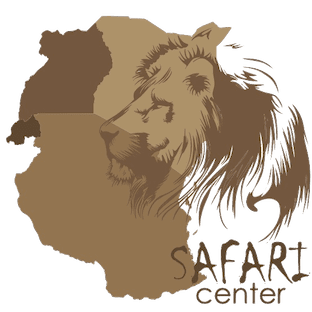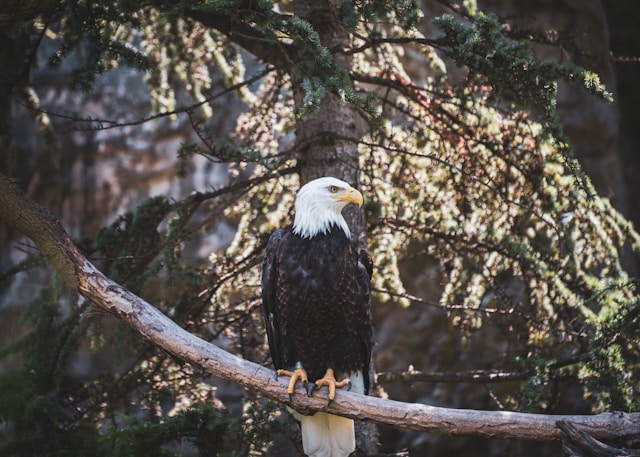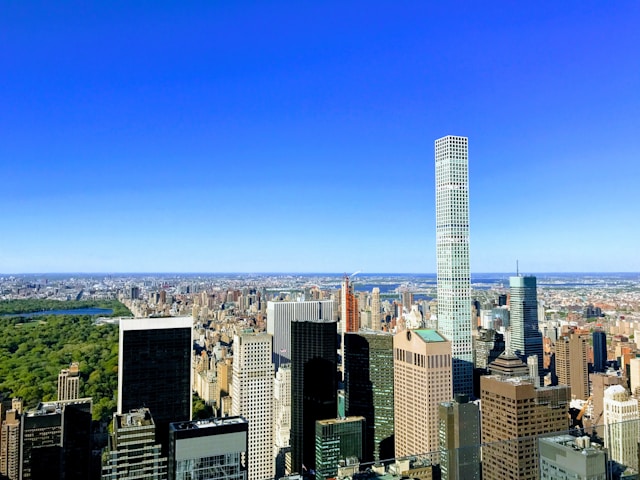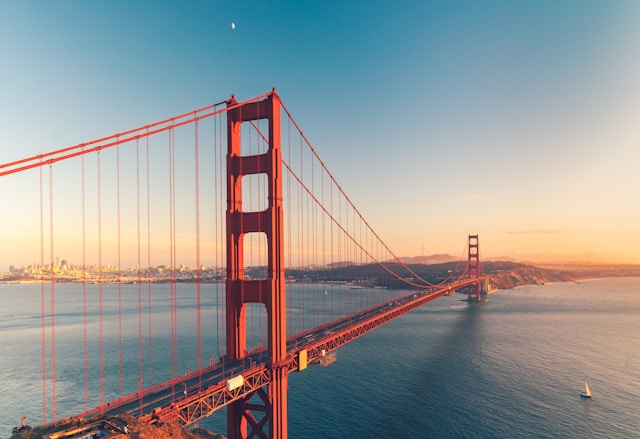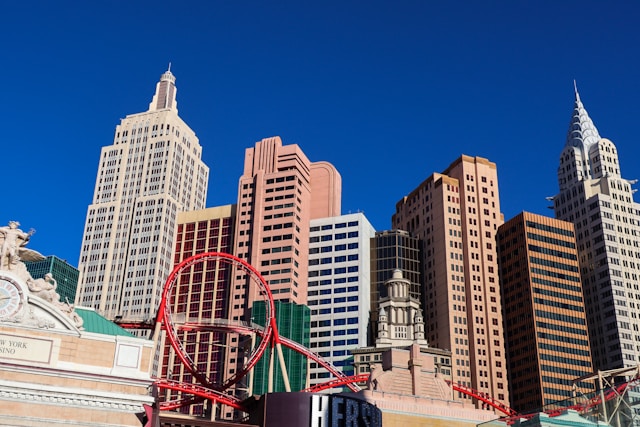Famous Cities In USA And Wildlife Habitats
Famous cities in USA surprise many with hidden wildlife. Urban areas mix buildings with natural spaces and animal life. Birds, mammals, and reptiles live within city lines. Parks, rivers, and gardens give animals safe places. These settings help keep balance and beauty. Famous cities in USA support nature’s quiet presence.
Urban birds of famous cities in USA
Birds adapt well to famous cities in USA. Pigeons, sparrows, and crows move between buildings and trees. Parks attract robins, cardinals, and doves. In some places, hawks and owls nest on rooftops. Waterfowl like ducks and geese flock to rivers. These birds add sound and life to each day.
Mammals found in city landscapes
Raccoons and squirrels explore trees, bins, and quiet yards. These mammals stay active during dusk and dawn. Famous cities in USA also hold rabbits, skunks, and foxes. Some parks shelter deer near city edges. Urban mammals learn to live near people while staying alert.
Green parks that protect wild species
Large city parks support animal life with trees, lakes, and soil. Central Park in New York hosts over 200 bird species. Golden Gate Park in San Francisco brings foxes and coyotes into view. Forest Park in St. Louis provides cover for reptiles and frogs. Such parks help wildlife thrive.
Rivers and lakes inside the cities
Rivers cut through many famous cities in USA. These waterways support fish, turtles, and water birds. The Potomac River flows near Washington, D.C. and brings herons, bass, and otters. Chicago’s Lake Michigan shores show gulls, frogs, and dragonflies. Such places offer fresh air and living space.
Desert wildlife in southwestern cities
Cities like Phoenix and Las Vegas sit in dry zones. Lizards, snakes, and jackrabbits survive the heat and sand. Cactus wrens and roadrunners dart through dry shrubs. Coyotes howl from nearby hills. These cities manage growth with care for nearby wildlife.
Forest edges near growing towns
Some famous cities in USA lie near forests. Atlanta blends trees with roads and homes. Deer, owls, and possums move between woods and streets. In Seattle, raccoons and eagles appear near forest lines. Such spaces support both human needs and wild survival.
Wetland zones in coastal cities
Miami and New Orleans hold marshes and swamps nearby. These wetlands bring frogs, gators, and cranes into view. Water snakes swim near reeds, while turtles sun on logs. Wetlands filter water and shelter birds. They play a strong part in city ecosystems.
Mountains near urban wildlife zones
Cities like Denver and Salt Lake City sit near mountains. These areas host elk, bears, and eagles. City edges may show foxes crossing roads. Mountain streams hold trout and frogs. Trails link people to nearby wildlife zones without much travel.
Wildlife centers and rescue parks
Famous cities in USA build rescue parks for injured or lost animals. These centers care for owls, hawks, and deer. Staff work to return animals to nature. Visitors learn from signs and talks. This builds respect and support for city wildlife.
Bees and insects in city gardens
Urban gardens support bees, butterflies, and beetles. These small creatures pollinate plants and flowers. Rooftop gardens grow herbs and attract bugs. Cities plant milkweed to help monarchs. Bees find space in parks, balconies, and flower beds. Their work keeps trees and gardens blooming.
City zoos with local species
Zoos in cities house animals from many zones. Some focus on local species in wild-like spaces. Los Angeles Zoo supports condors, lizards, and wild cats. Philadelphia Zoo protects snakes and small mammals. These zoos help people see wildlife up close and care more.
Nightlife of urban animals
At night, raccoons and foxes roam for food. Bats fly above parks and eat insects. Frogs croak near ponds and rivers. Owls call from high trees or buildings. City noise softens, and nature sounds grow strong. Night brings a new face to urban wildlife.
Coastal birds in beachside cities
Cities along coasts hold gulls, pelicans, and herons. Boston’s shores welcome puffins during some seasons. Los Angeles beaches show sea birds gliding low. Sandpipers move quickly near the tide. These birds nest, hunt, and rest along busy shores.
Reptiles found in warm cities
Warm cities like Orlando and Houston see lizards and snakes near homes and parks. Geckos run across walls. Water snakes swim in city lakes. Turtles bask in sunny corners. These reptiles live calmly near people without harm.
Urban fish and water species
Lakes and rivers in cities support bass, trout, and carp. Fish swim in ponds near museums and gardens. Turtles share these spaces with frogs. Egrets and herons fish from shorelines. These water spots stay calm and filled with life.
Butterflies flutter in quiet corners
Butterflies visit gardens, parks, and balconies. Their wings show bright colors and soft movement. Monarchs follow flower paths across cities. People plant blooms to attract them. Butterflies help pollinate and spread beauty in simple ways.
Cats and dogs as part of landscape
Feral cats roam alleys, parks, and rooftops. They rest in quiet spots and hunt birds or mice. Stray dogs may move in small groups. Cities build shelters to support them. Animal workers help keep balance with care.
Bridges and rooftops for nesting
Pigeons nest under bridges. Hawks build nests on tall towers. Some birds prefer rooftops for warmth and view. City heights offer peace above traffic. These spots stay safe from many threats.
Traffic and animals in the city
Animals cross roads to reach food or mates. Signs warn drivers of crossing paths. Wildlife groups track animal movement. Tunnels or bridges help them cross safely. These efforts reduce harm and protect all life.
Seasonal changes in city wildlife
Spring brings chicks, blooms, and frogs. Summer shows bugs, bees, and young mammals. Fall adds birds in flight and nesting squirrels. Winter brings calm, with fewer signs of wildlife. Still, animals adapt and remain present year-round.
City wildlife in art and culture
Murals show birds, trees, and foxes in bright color. Sculptures reflect deer, frogs, or butterflies. Events honor local wildlife. People paint parks with images of wings, paws, and feathers. Art reminds people of wild life nearby.
Public talks and nature walks
Cities host talks on birds, insects, and local plants. Parks arrange nature walks for all ages. Experts teach signs of wildlife in paths, prints, or calls. These events grow love for nature.
Wildlife signs in city design
Street names reflect local animals. Logos show fish, birds, or deer. Parks use animal symbols on signs. Nature becomes part of the city’s image. This keeps the wild visible in daily life.
Shelter building by local animals
Raccoons build dens in attics. Birds build nests in vents. Squirrels make homes in roof corners. Wildlife uses city materials to build. These homes keep animals safe and warm.
People feeding city animals
Some residents leave seeds or food for birds and mammals. Others leave bowls for stray pets. Feeding brings joy but also needs care. Balanced feeding avoids harm or crowding.
Educational programs on city wildlife
Schools teach about local species and their needs. Children visit parks to watch birds. Programs link books, photos, and sounds. Cities grow smarter through these efforts.
Cleanups that help wildlife grow
Litter harms animals in many ways. City groups clean rivers, parks, and paths. Clean spaces bring birds and bugs back. Trash-free zones protect small species. These cleanups help both people and animals live better.
Climate changes and urban nature
Hotter days and wild weather shift animal paths. Birds nest earlier. Insects hatch in new times. Cities track these changes. New plants and water areas help wildlife cope.
Quiet city full of wild sounds
Even in the busiest cities, nature sings. Birds chirp at sunrise. Frogs croak at dusk. Leaves rustle with tiny steps. Wildlife lives and breathes across each zone. With care and respect, famous cities in USA keep wild life alive and well.
